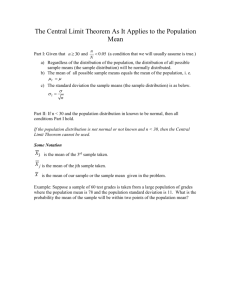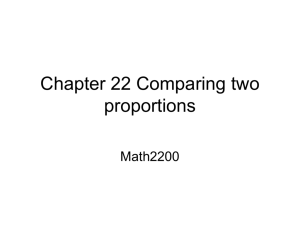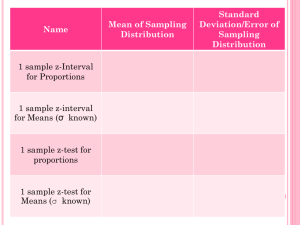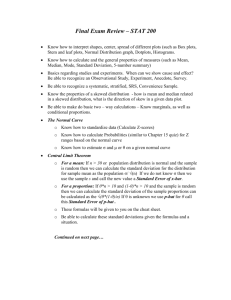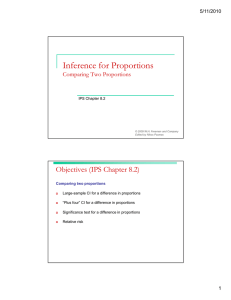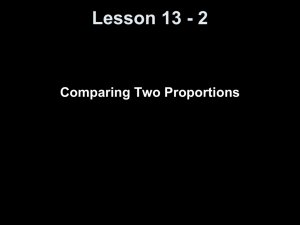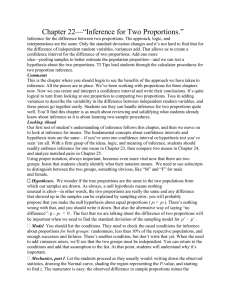Chapter 22 Comparing Two Proportions
advertisement
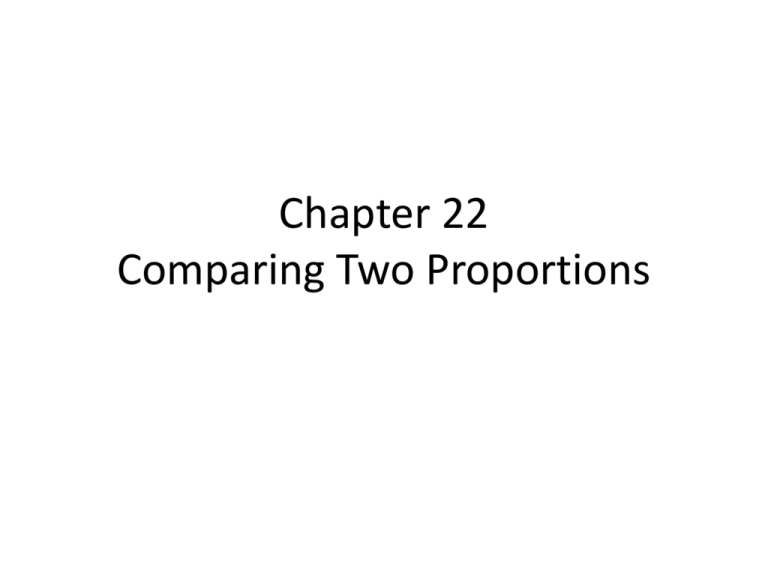
Chapter 22 Comparing Two Proportions Comparing 2 Proportions • How do the two groups differ? • Did a treatment work better than the placebo control? • Are this years results better than last years? Remember!!! • Var(X – Y) = Var(X) + Var(Y) • SD(X – Y) = √[(Var(X) + Var(Y)] – only when X and Y are independent Standard Deviation Of The Difference Between Two Proportions *proportions observed in independent random samples are independent* *be sure to use notation to differ between variables* SE( p̂1 - p̂2 ) = SD( p̂1 - p̂2 ) = p̂1q̂1 p̂2 q̂2 + n1 n2 p1q1 p2 q2 + n1 n2 *We don’t always know what the true p is. When you don’t find the SE (Standard Error)* SE( p̂1 - p̂2 ) = p̂1q̂1 p̂2 q̂2 + n1 n2 Assumptions and Conditions • Within each group the data should be based on results for independent individuals. Check: – Randomization condition: each data set should be selected at random – 10% condition: if sampled without replacement, then the sample should be less than 10% of the population – Independent Groups Assumption: The two groups need to be independent of each other And… • Success/Failure Condition: BOTH groups have at least 10 successes and 10 failures the sampling distribution model for a difference between two independent proportions Provided that the sampled values are independent, the samples are independent, and the sample sizes are large enough, the sampling distribution of p̂1 - p̂2 is modeled by a Normal model with mean = p̂1 - p̂2 standard deviation = SD( p̂1 - p̂2 ) = p1q1 p2 q2 + n1 n2 A two-proportion z-interval When the conditions are met, we are ready to find the confidence interval for the difference of two proportions, p1 – p2. The confidence interval is * p̂ p̂ ± z ( 1 2 ) ´ SE ( p̂1 - p̂2 ) where we find the standard error of the difference, p̂1q̂1 p̂2 q̂2 from the observed proportions SE( p̂1 - p̂2 ) = n1 + n2 The critical value z* depends on the particular confidence level, C, that you specify
